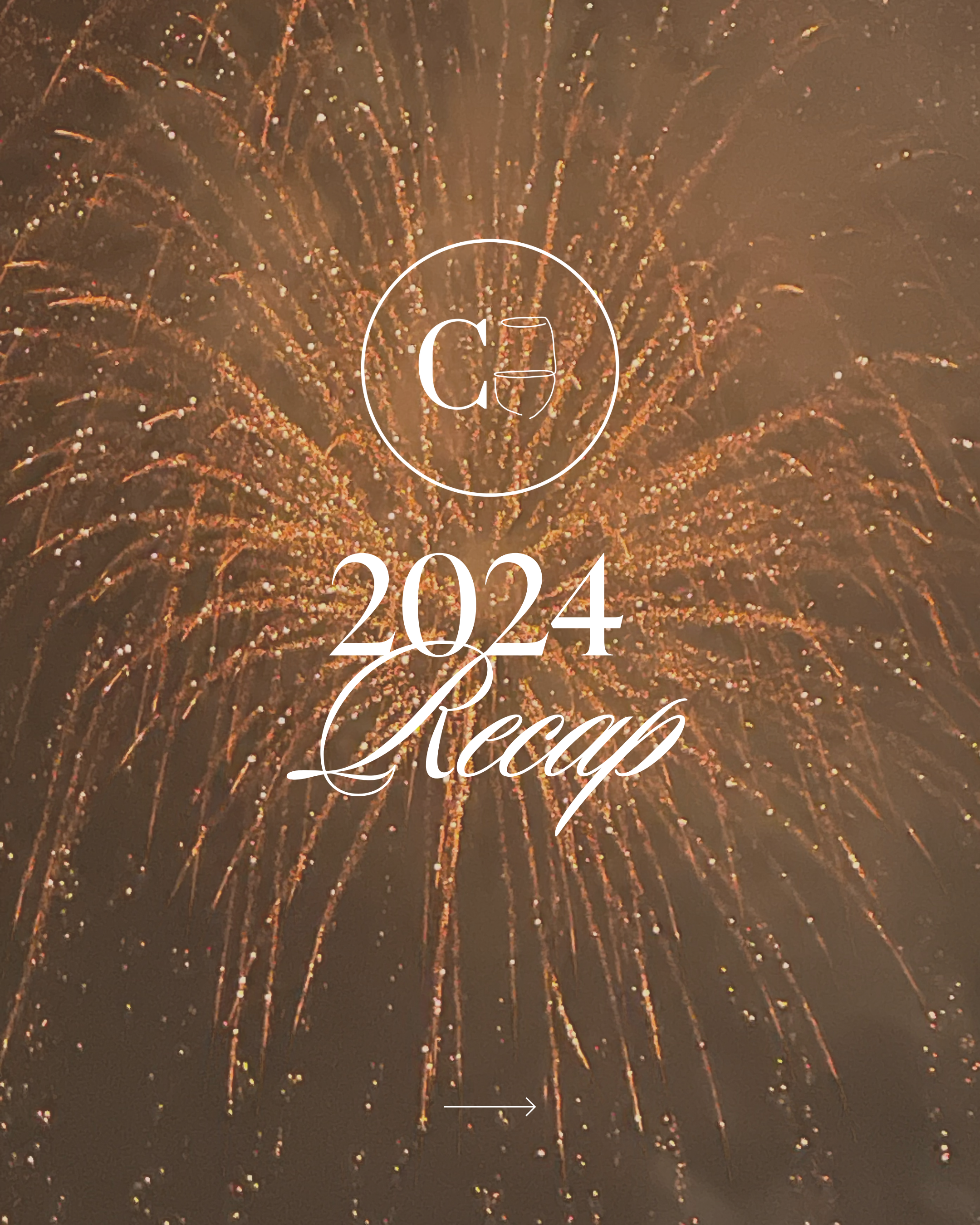Over the years of executing and refining our copywriting process, I started noticing how it wasn’t just the fact that there was a consistent process that allowed us to deliver results but that there was a particular technique at work.
When originally creating Copy Uncorked, I named our 3-step process “The Copy Cellar” which is based on a copywriting process I learned from (and was encouraged to use) by Joanna Wiebe while in her program 10X Freelance Copywriter.
Which flows as follows – with our name for each step in parentheses:
- (Uncork) Research & Discovery
- (Pour) Writing & Wireframing
- (Sip) Revisions & Testing
We still follow that flow but decided to change the name from being fun and creative (The Copy Cellar) to be more descriptive and accurate.
Enter: The CU Way™
I love that this term better encompasses our particular technique and style of completing brand messaging guides, writing website and launch copy, and more.
I’m not naive to think we’re completely reinventing the wheel and we’re definitely not dismissing any of the incredible approaches to copywriting that have come long before us.
Rather, The CU Way™ is an amalgamation of a lot of them and I’m proud of our curated, well-informed methods.

So let’s break down the 7 main influences and pillars that make up our approach.
01 – THE STORYBRAND FRAMEWORK / JOSEPH CAMPBELL’S HERO’S JOURNEY
Whether you prefer to credit Donald Miller of Storybrand or the OG Joseph Cambell – or someone else entirely, the idea is, every narrative story fundamentally follows this flow:
A character has a problem and meets a guide, who gives them a plan, and calls them to action that ends in a success, helps them avoid failure, and results in a character transformation. (via mystorybrand.com)
We love the simplicity and clarity this can bring to developing a brand story – and further, how it allows you to not just tell your own, personal story but invite your audience INTO a story that resonates with them. It’s so simple but it’s a massive shift and it’s what a lot of brands are doing wrong without realizing it.
This framework has allowed us to lead powerful client interviews and really understand where our client’s story and their audience’s needs intersect.
We don’t solely follow the Storybrand framework by any means, but I do love it for its emphasis on:
- Clarity (as they say, “if you confuse you lose”)
- Keeping the reader as the hero of the story
- Creating an intentional customer journey (or ‘funnel’) that leads them to success
02 – COPYHACKERS’ CONVERSION PRINCIPLES
From there, we dig deeper into conversion copywriting principles as taught by CopyHackers. It’s where a lot of my personal copywriting training has come from and I love how data-driven, nuanced, and just all-around genius Joanna Wiebe really is.
It’s started to shift a bit more recently, but a lot of CopyHackers’ educational materials focus on the SAAS industry and are highly tactical (versus being as applicable to the more personality-driven service-provider/solopreneur).
We tend to lean toward the brand/creative copywriting side – since the very notion of a ‘brand’ is my first love – while applying conversion copywriting principles. We sort of meet somewhere in the middle. Learn more about what conversion copywriting is and what research is involved here.
This seems to be a great mix for 90% of our clients who don’t have massive audiences or tons of historical data to work with anyway.
03 – THEMATIC, CREATIVE COPY ELEMENTS
On that note, we love using thematic, creative copy elements as a point of differentiation for a brand.
An obvious example is our own wine theme – but we’ve also helped a number of clients create a flushed out metaphor for their own brand/business, too.
We love how it gives a certain ‘character’ to a brand and helps it to stand out – even when its offerings may be similar to a competitor. Something about how a well-themed brand entertains and inspires creates a strong emotional connection that’s not to be undervalued!
Not to mention, whenever you’re able to present a concept in a new light – or create a perspective shift or cause a lightbulb moment for your reader, it has a memorable effect.
So we have conversations with clients early on about if/whether a ‘theme’ of sorts is right for them. Then if so, we spend a lot of time ensuring clarity and cohesion throughout the brand messaging stage of their project.
04 – COPY X DESIGN
By this point, you’ve likely heard us talk about this a lot. Here’s the deal: If you think of a typical agency structure, there are multiple departments, all working together on any given creative branding project (account managers or a project lead, designers, developers, copywriters, ad managers or media buyers, etc.).
So even as a copywriting studio – we don’t see ourselves as totally distinct from other design / creative studios – rather, we strive to work with them ‘interdepartmentally’ to ultimately produce a stronger end result for our clients.
We put heavy emphasis not only on what your copy actually says but how it will look and how the copy and design will function together to create an even stronger result.
Even the typography your brand uses can affect how your words are read and interpreted in terms of tone.
To support our clients in all of this, we share our top picks for “Design Pairings” and either recommend design solutions to our clients, collaborate with their chosen designer, or partner with designers internally to handle it all for them.
05 – CUSTOMER / USER EXPERIENCE
We’re always taking the client/user experience into account – the copy can be amazing but if the design, the page function, the flow of information – if that’s all off, it just won’t land.
This plays a bit more into the ‘testing’ phase of copywriting and later in development, but it even speaks to how we rarely deliver mega-long sales page copy to our clients.
Simply because we often believe you can accomplish the same thing with say, 10-page scrolls, instead of 30.
But if 30 scrolls were necessary for whatever reason, we’d think about navigation – i.e. Can we add a sticky menu? What about a back-to-top button? What about putting the juiciest, most looked-for info at the top?
There are different types of decision-makers so ‘short’ copy isn’t wrong just as ‘long’ copy isn’t wrong. But we do consider length and how we’re providing various details and sections to support those who are methodical in their decision-making, those who are spontaneous, and those somewhere in between.
Additionally, another aspect of effective copywriting is the timing of delivery. It needs to come at the right time within the funnel, or right at the peak of their interest, etc.
That often requires taking a step back and thinking: Where’s it being used? How are people getting to the page? Where do they go from here?
It’s about form and function.
06 – EMPATHETIC / HUMANISTIC
Coming back to that balance of story and data, we apply industry research, voice-of-customer data, and proven persuasion techniques—but not at the expense of genuine empathy & humanity.
As much as possible, we like to affirm the reader and have the copy leave them feeling encouraged and excited – certainly not on the defensive or in a high-pressure sales situation—which could lead to a decision that’s not right for them.
Copy should always be written with integrity and lead to a mutually beneficial outcome.
With that in mind, we also pay attention to principles of human psychology including things like the reciprocity principle, storytelling, the priming effect, the balance of emotion & logic, the open loop effect, framing, navigating risk, and so many others. When employing human psychology, we do so with care, not manipulation.
07 – ADAPTABLE TO THE TARGET AUDIENCE + FOUNDER PREFERENCES
Now, even with all of that in mind, we simply want our clients to walk away feeling obsessed with their own brand so on some level it does just have to resonate and sit well with them, too. (If it doesn’t, they won’t be as confident promoting it all!)
It can’t stop there, of course, which is why we again try to find the intersection between what the brand founder likes and what’s going to actually attract their ideal audience.
For some brands, we write way wordier website copy. For others, we try to scale it way back. It all comes back to whatever data or info we can get our hands on, and what makes the most sense for the target client profile that’s been developed.
No big deal, right?
Writing compelling copy for a brand is a complex assignment. It’s intricately layered, demands that you ask (a ton of) really good questions, and is both an art form and a measurable science.
The CU Way™ allows us to fluctuate back and forth between the two to ultimately deliver copy that doesn’t feel stiff and stale – OR overly personality-fueled to the point of confusion and ineffectiveness.
We also teach these principles and this approach to our members of CU Edu.
I’ll likely continue to update this post as I see fit but I wanted to be able to provide at least an initial overview of the style and approach – or should I say way – that’s served us & our clients well!
Cheers, Kaitlyn
Read the Comments +
-
[…] Our methods/technique (fittingly now referred to as The CU Technique™) […]
-
This post is fantastic! I happen to really love your thematic copy elements and how you weave them throughout the “story”. Not only does it stand out, but it also creates an impression that is easier to recall. Love that!
-
Thank you, Luz!Love hearing that and we couldn’t agree more. 🙂
-





[…] Our methods/technique (fittingly now referred to as The CU Technique™) […]
This post is fantastic! I happen to really love your thematic copy elements and how you weave them throughout the “story”. Not only does it stand out, but it also creates an impression that is easier to recall. Love that!
Thank you, Luz!Love hearing that and we couldn’t agree more. 🙂